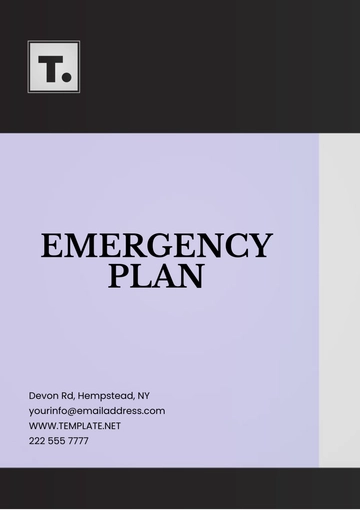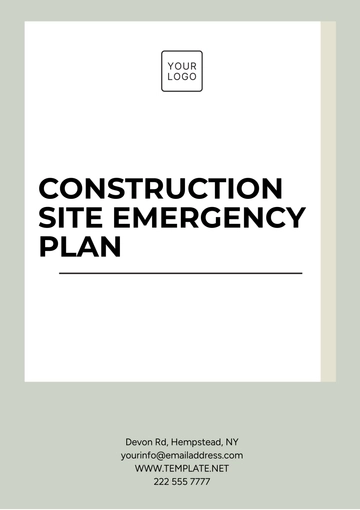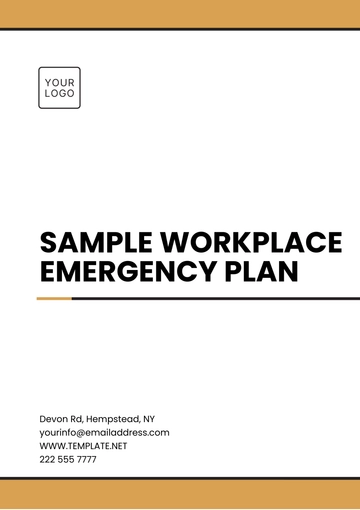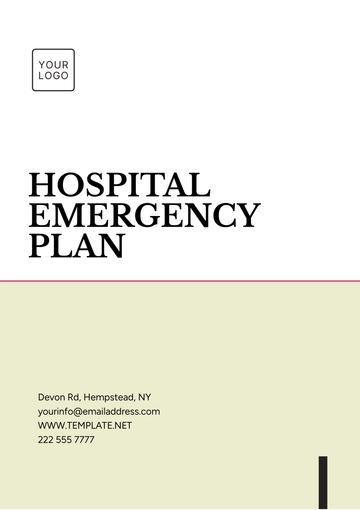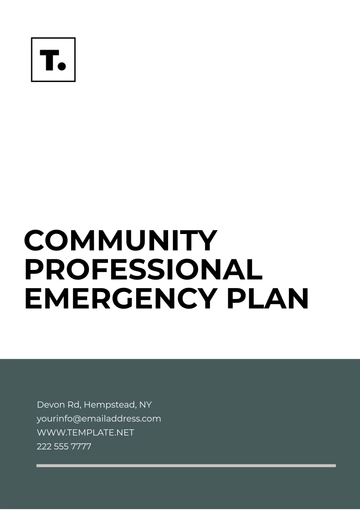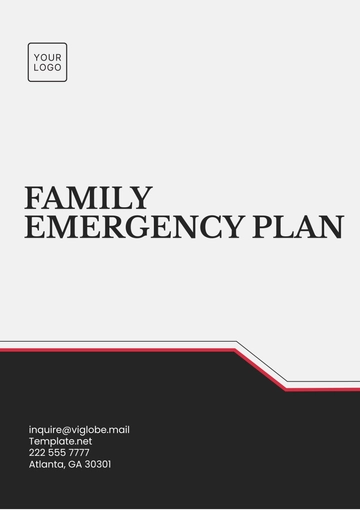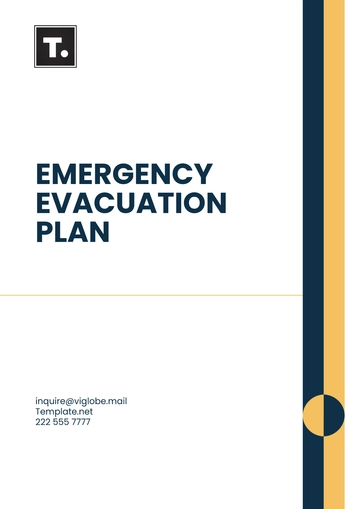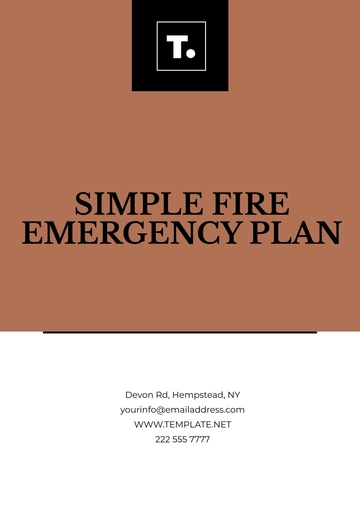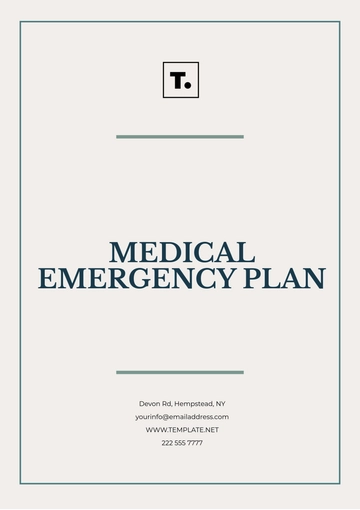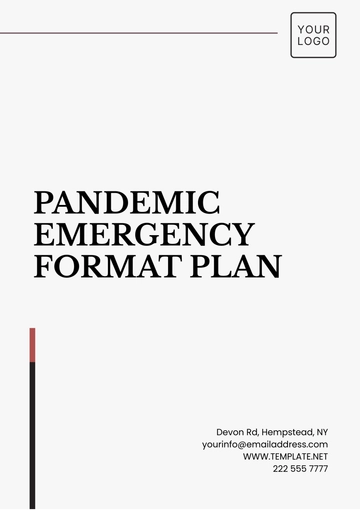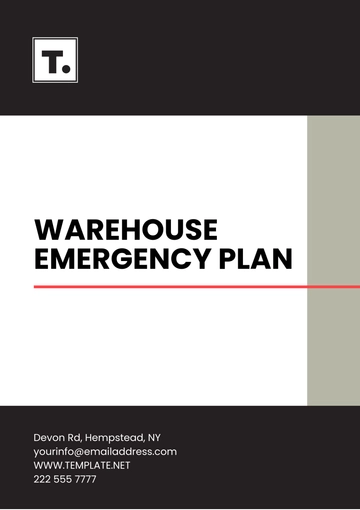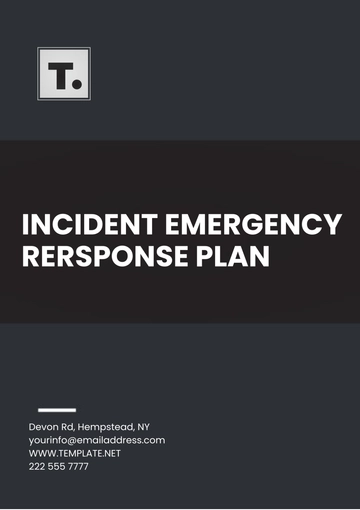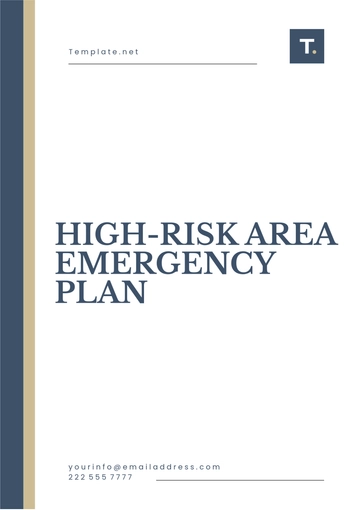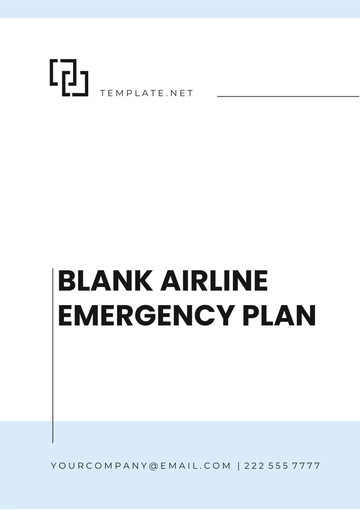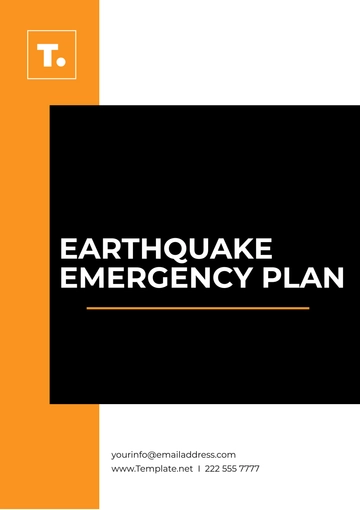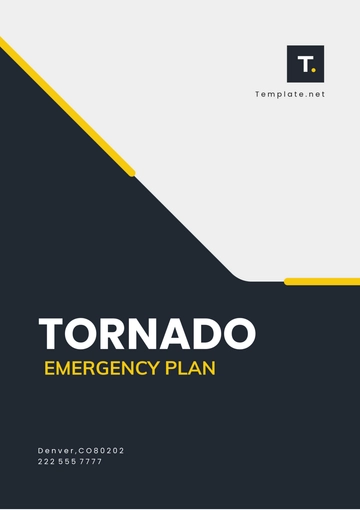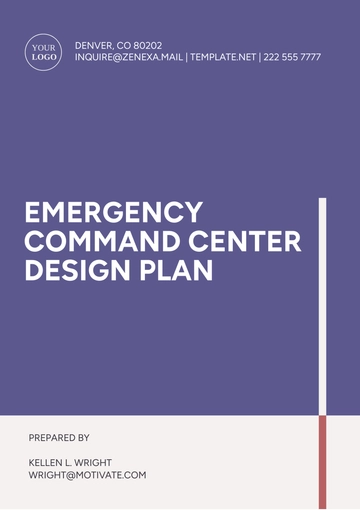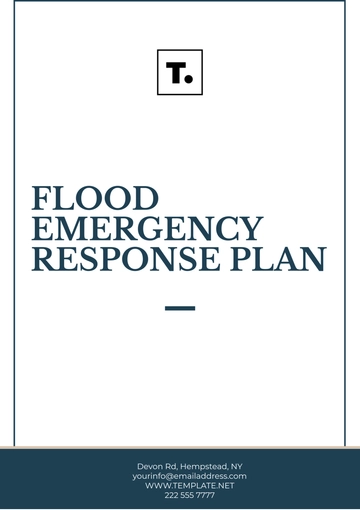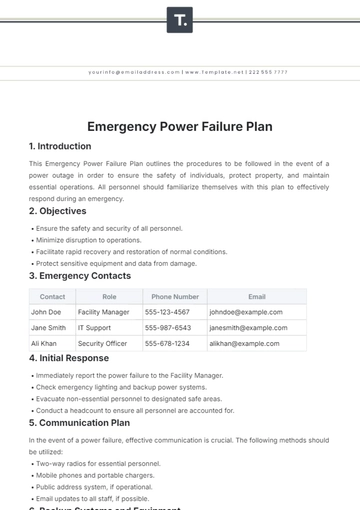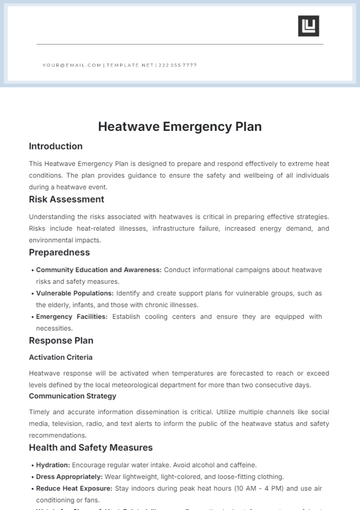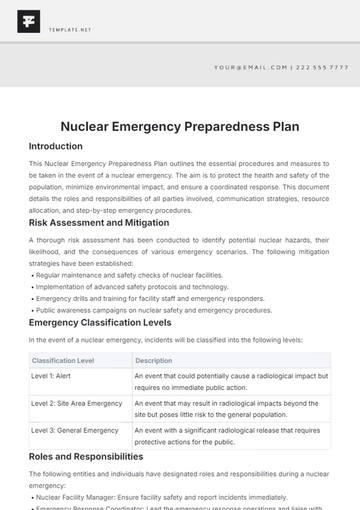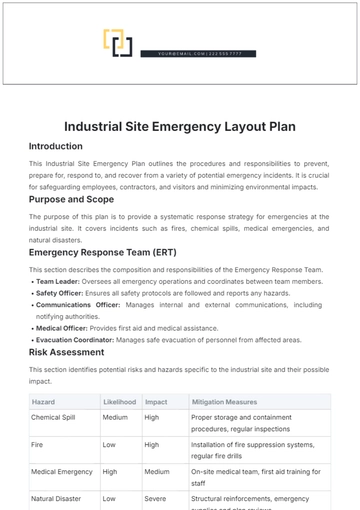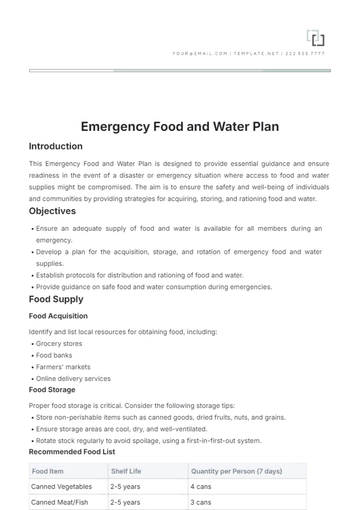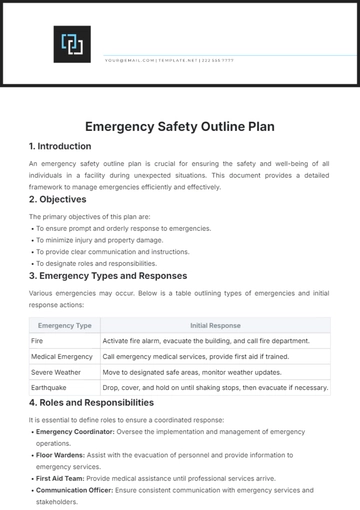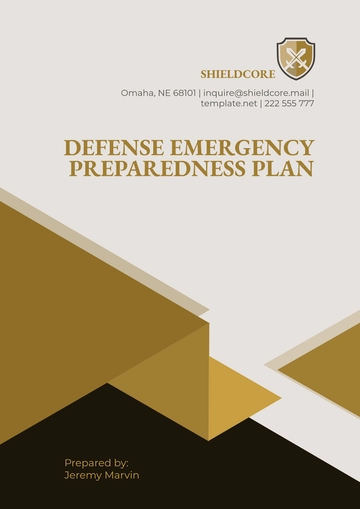Free Community Professional Emergency Plan
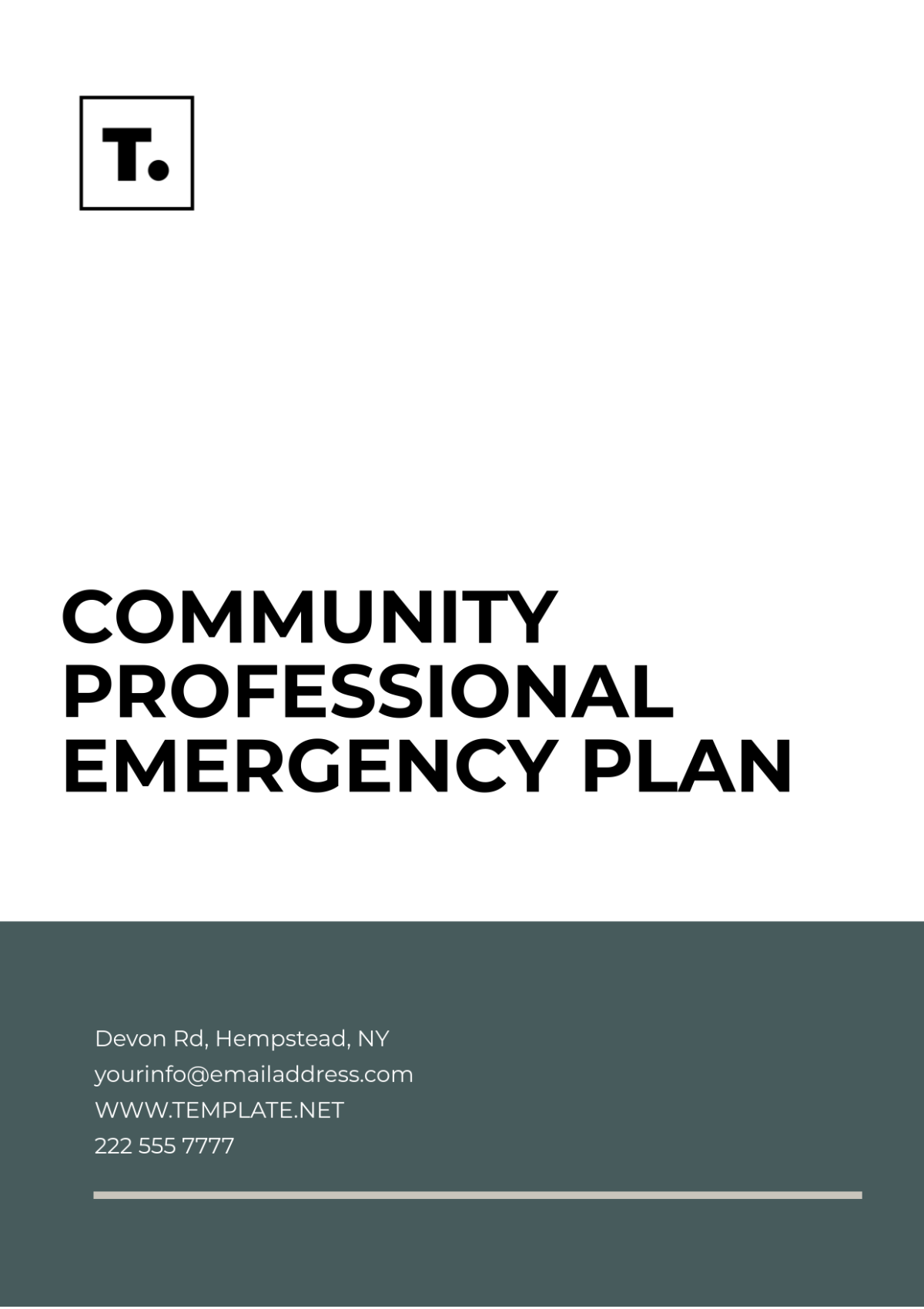
Introduction
This Community Professional Emergency Plan is designed to provide a comprehensive and organized framework to handle emergencies effectively within the community. It aims to minimize the impact of emergencies on community members and resources, ensuring a swift recovery with minimal disruption.
Objectives
To protect lives, property, and the environment.
To ensure efficient and coordinated response to emergencies.
To establish clear communication channels.
To facilitate quick recovery and return to normal operations.
Roles and Responsibilities
Role | Responsibility |
|---|---|
Emergency Coordinator | Overall coordination and command of emergency response efforts. |
Communications Officer | Managing internal and external communications during an emergency. |
Logistics Manager | Overseeing resources and logistics, including supply distribution. |
Safety Officer | Ensuring all operations are conducted safely and mitigating hazards. |
Medical Officer | Coordinating medical response and healthcare support. |
Emergency Communication Plan
Effective communication is crucial during emergencies. The community will utilize multiple channels to disseminate information:
Local radio and television broadcasts.
Automated text message alerts.
Social media updates (Twitter, Facebook).
Community website emergency updates page.
Public address systems and loudspeakers.
Emergency Procedures
The following procedures outline the specific steps to be taken during an emergency:
Evacuation
Identify safe evacuation routes.
Assign evacuation zone leaders to coordinate efforts.
Establish assembly points for evacuees.
Conduct regular evacuation drills.
Shelter-In-Place
Determine safe indoor locations for sheltering.
Secure windows and doors to prevent external contamination.
Ensure access to emergency supplies (food, water, medical kits).
Monitor official communication channels for updates.
Medical Emergencies
Provide immediate first aid to the injured.
Contact local emergency services and provide detailed information.
Transport injured individuals to a designated medical facility if necessary.
Document all medical incidents and responses.
Resource Management
Efficient resource management is critical to handle emergency situations effectively. The community shall maintain an inventory of essential resources including:
First aid and medical supplies.
Sufficient food and water reserves.
Backup power sources (generators, batteries).
Emergency shelter materials (tents, blankets).
Communication tools (two-way radios, satellite phones).
Training and Drills
Regular training sessions and drills are essential to ensure readiness. The training plan includes:
First aid and CPR training for volunteers.
Fire evacuation drills on a quarterly basis.
Communication and coordination workshops for officials.
Logistics and resource management exercises.
Review and Improvement
The emergency plan will undergo annual reviews to incorporate lessons learned and improve efficiency. The review process includes:
Gathering feedback from emergency response exercises.
Conducting post-incident analyses to identify gaps.
Updating contact information for all emergency personnel.
Revising procedures based on new hazards or threats.
- 100% Customizable, free editor
- Access 1 Million+ Templates, photo’s & graphics
- Download or share as a template
- Click and replace photos, graphics, text, backgrounds
- Resize, crop, AI write & more
- Access advanced editor
Stay prepared for any emergency with the Community Professional Emergency Plan Template, offered by Template.net. This customizable, downloadable, and printable template ensures your community is equipped to handle crises effectively. Tailor the plan to your specific needs, and make updates easily with our editable AI Editor Tool. Perfect for community leaders and emergency professionals seeking a streamlined and efficient solution.
You may also like
- Finance Plan
- Construction Plan
- Sales Plan
- Development Plan
- Career Plan
- Budget Plan
- HR Plan
- Education Plan
- Transition Plan
- Work Plan
- Training Plan
- Communication Plan
- Operation Plan
- Health And Safety Plan
- Strategy Plan
- Professional Development Plan
- Advertising Plan
- Risk Management Plan
- Restaurant Plan
- School Plan
- Nursing Home Patient Care Plan
- Nursing Care Plan
- Plan Event
- Startup Plan
- Social Media Plan
- Staffing Plan
- Annual Plan
- Content Plan
- Payment Plan
- Implementation Plan
- Hotel Plan
- Workout Plan
- Accounting Plan
- Campaign Plan
- Essay Plan
- 30 60 90 Day Plan
- Research Plan
- Recruitment Plan
- 90 Day Plan
- Quarterly Plan
- Emergency Plan
- 5 Year Plan
- Gym Plan
- Personal Plan
- IT and Software Plan
- Treatment Plan
- Real Estate Plan
- Law Firm Plan
- Healthcare Plan
- Improvement Plan
- Media Plan
- 5 Year Business Plan
- Learning Plan
- Marketing Campaign Plan
- Travel Agency Plan
- Cleaning Services Plan
- Interior Design Plan
- Performance Plan
- PR Plan
- Birth Plan
- Life Plan
- SEO Plan
- Disaster Recovery Plan
- Continuity Plan
- Launch Plan
- Legal Plan
- Behavior Plan
- Performance Improvement Plan
- Salon Plan
- Security Plan
- Security Management Plan
- Employee Development Plan
- Quality Plan
- Service Improvement Plan
- Growth Plan
- Incident Response Plan
- Basketball Plan
- Emergency Action Plan
- Product Launch Plan
- Spa Plan
- Employee Training Plan
- Data Analysis Plan
- Employee Action Plan
- Territory Plan
- Audit Plan
- Classroom Plan
- Activity Plan
- Parenting Plan
- Care Plan
- Project Execution Plan
- Exercise Plan
- Internship Plan
- Software Development Plan
- Continuous Improvement Plan
- Leave Plan
- 90 Day Sales Plan
- Advertising Agency Plan
- Employee Transition Plan
- Smart Action Plan
- Workplace Safety Plan
- Behavior Change Plan
- Contingency Plan
- Continuity of Operations Plan
- Health Plan
- Quality Control Plan
- Self Plan
- Sports Development Plan
- Change Management Plan
- Ecommerce Plan
- Personal Financial Plan
- Process Improvement Plan
- 30-60-90 Day Sales Plan
- Crisis Management Plan
- Engagement Plan
- Execution Plan
- Pandemic Plan
- Quality Assurance Plan
- Service Continuity Plan
- Agile Project Plan
- Fundraising Plan
- Job Transition Plan
- Asset Maintenance Plan
- Maintenance Plan
- Software Test Plan
- Staff Training and Development Plan
- 3 Year Plan
- Brand Activation Plan
- Release Plan
- Resource Plan
- Risk Mitigation Plan
- Teacher Plan
- 30 60 90 Day Plan for New Manager
- Food Safety Plan
- Food Truck Plan
- Hiring Plan
- Quality Management Plan
- Wellness Plan
- Behavior Intervention Plan
- Bonus Plan
- Investment Plan
- Maternity Leave Plan
- Pandemic Response Plan
- Succession Planning
- Coaching Plan
- Configuration Management Plan
- Remote Work Plan
- Self Care Plan
- Teaching Plan
- 100-Day Plan
- HACCP Plan
- Student Plan
- Sustainability Plan
- 30 60 90 Day Plan for Interview
- Access Plan
- Site Specific Safety Plan
